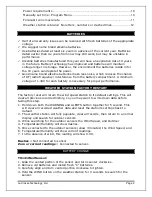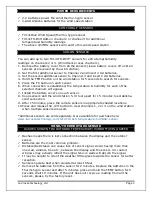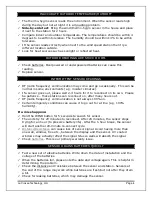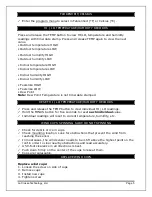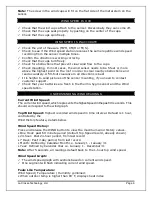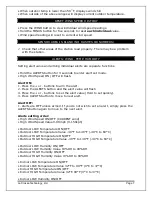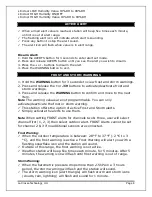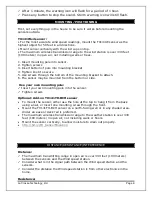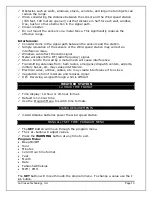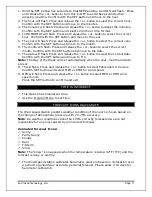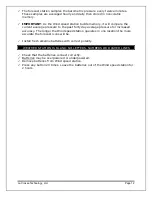
La Crosse Technology, Ltd.
Page 4
INACCURATE OUTDOOR TEMPERATURE/HUMIDITY
The thermo-hygro sensor reads the environment. When the sensor reads high
during the day but not at night it is a mounting problem.
Side-by-side test: Bring the wind/thermo-hygro sensor in the house and place
it next to the station for 2 hours.
Compare indoor and outdoor temperature. The temperatures should be within 4
degrees to be within tolerance. The humidity should be within 14% to be within
tolerance.
If the sensor reads correctly when next to the wind speed station then try a
different location outside.
Look for heat sources such as sunlight or reflected heat.
OUTDOOR READINGS ARE STUCK OR OFL
Check batteries. Overpowered or underpowered batteries can cause this
reading.
Replace sensor.
INTERMITTENT SENSOR READINGS
RF (radio frequency) communication may come and go occasionally. This can be
normal in some environments (e.g. moister climates).
If a sensor goes out, please wait 2-4 hours for it to reconnect on its own. Please
be patience – these stations can reconnect on, after many hours out.
RF (radio frequency) communication is not always 100% on.
Certain temporary conditions can cause it to go out for a time (e.g. 100%
humidity).
If a miss happens:
Hold the WIND button for 5 seconds to search for sensor.
The units try for 20 minutes to reconnect. After 20 minutes, the sensor stops
trying for an hour (to preserve battery life). After the 1-hour break, the sensor
will start another 20-minute re-connect cycle.
can cause loss of sensor signal. Avoid having more than
one wall, window, tree etc., between the display and the sensor. UV coated
windows may actually reflect the signal. Stucco walls will absorb the signal.
Check
. This is our primary warranty issue.
SENSOR DRAINS BATTERIES QUICKLY
Test a new set of alkaline batteries. Write down the date of installation and the
voltage of the batteries.
When the batteries fail, please note the date and voltage again. This is helpful in
determining the problem.
Check the distance and resistance between the sensor and station. Sensors at
the end of the range may work while batteries are fresh but not after they drain
a bit.
Check for leaking batteries, which may damage the sensor.


